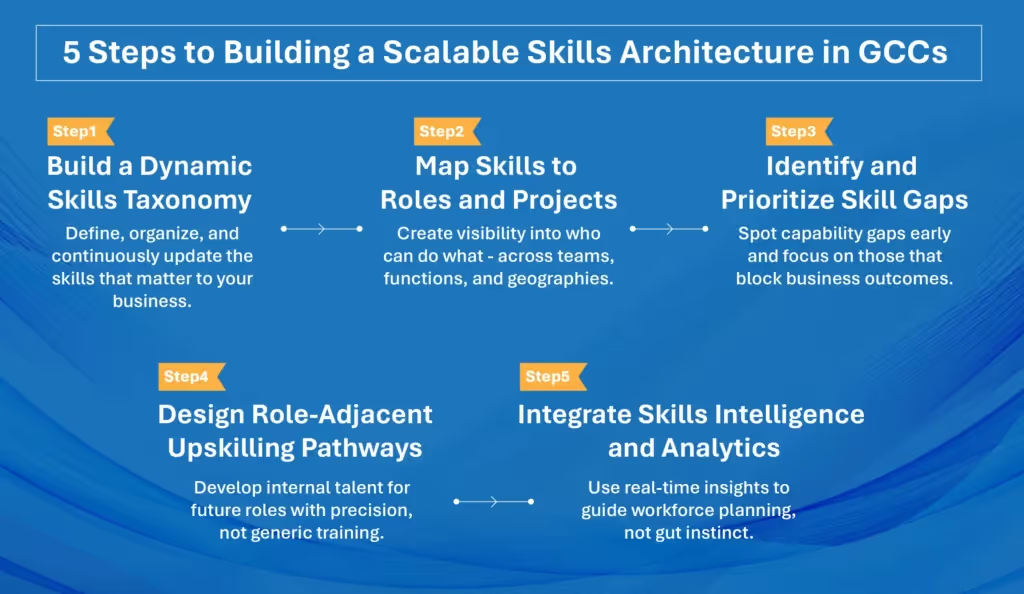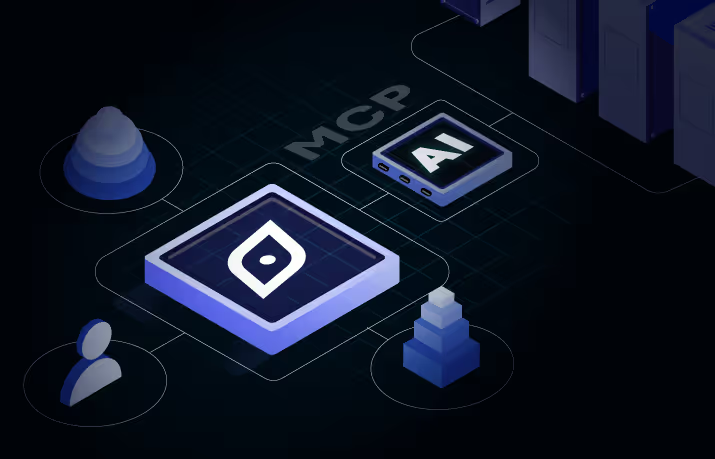The Talent Blueprint for GCCs: Building a Scalable, Skills-First Workforce with Skills Architecture
GCCs are under pressure like never before. What began as cost centres are now expected to lead global AI, cloud, and digital transformation mandates – yet most lack the workforce agility to deliver at scale.
The core issue – growing disconnect between business priorities and workforce capabilities. According to EY’s GCC Pulse Survey, 50% of GCCs are actively reskilling their existing workforce, a sign that the problem isn’t being ignored. But reskilling alone isn’t solving it – because most organizations still lack the visibility to know what to reskill, who, and when.
Traditional, role-based models can’t keep up with today’s pace. They hide skills gaps, slow down deployment, and force reactive hiring in already strained talent markets.
To compete, GCCs must pivot to a skills-first model – where real capabilities drive workforce planning, not job titles. But strategy alone isn’t enough. What enables this shift is connecting skills architecture with skills intelligence: a structured, data-driven system to identify, map, and mobilize talent in real time. And without it, scaling transformation-ready talent is nearly impossible.
Scaling GCCs: Moving from Roles to Skills Architecture
GCCs today operate in a high-velocity environment – where AI pilots go global in months, cloud migrations accelerate across regions, and cybersecurity needs shift week to week. But workforce models built around rigid job titles and static org charts can’t keep up.
The absence of scalable skills architecture creates bottlenecks when GCCs need flexibility and speed:
- Internal mobility stalls as role-based systems don’t capture the full range of skills employees have within the skills architecture.
- Reskilling initiatives underdelivers because learning plans are built around broad roles – not the specific capabilities business priorities now demand.
- Project ramp-up slows as staffing decisions rely on job titles, not real-time visibility into who’s ready or skilled for the task – a gap that skills intelligence helps bridge.
This leads to underutilized talent, longer hiring cycles, and delayed transformation – despite the right skills often existing in-house. That’s why building a scalable skills architecture is critical. Without the ability to fluidly match skills to shifting needs, GCCs will hit capacity long before they reach their potential.
How GCCs Can Build a Scalable Skills Architecture
A fast-growing global tech company is looking to set up its first GCC in India to support a surge in demand for AI-driven analytics services. The objective? Stand up a high-impact team quickly, with the right skills, and align it directly with evolving business priorities.
But rather than defaulting to legacy org charts and rigid roles, the company takes a skills-first approach, using a modern skills architecture to build a truly agile and future-ready workforce.
Here’s how that strategy plays out across key stages –
Step 1: Build a Dynamic Skills Taxonomy within Skills Architecture –
To set up their GCC for emerging AI/ML workloads, the tech firm built a dynamic skills taxonomy covering technical, functional, and behavioral capabilities tailored to their business.
This gave them a precise foundation for workforce planning – enabling smarter hiring and ensuring every new role aligned with real project needs.
Step 2: Map Skills to Roles, Projects, and Business Objectives –
The company mapped identified skills to key roles and transformation projects, ensuring talent deployment was tied directly to business goals.
This optimized the underlying skills architecture, eliminated misalignment, sped up project onboarding, and made the GCC responsive to evolving priorities of global HQ.

Step 3: Identify and Prioritize Skill Gaps –
and a clear skills architecture, the GCC team identified critical capability gaps in areas like ML Ops and client-facing analytics.
This structured approach helped them focus reskilling efforts where they’d have the biggest business impact – boosting speed and delivery quality.
Step 4: Design Reskilling and Upskilling Pathways –
Guided by their skills architecture, they built future-focused learning paths to help adjacent roles grow into high-demand areas rather than hiring externally.
This fueled internal mobility, reduced dependency on external hiring, and created a more engaged and future-ready workforce within the GCC.
Step 5: Integrate Skills Intelligence and Analytics –
The company implemented AI-based skills intelligence tools to track workforce capabilities and predict future needs in real time.
This allowed the GCC to make data-driven decisions at scale – optimizing talent deployment and maintaining alignment with fast-changing business demands.
By embedding skills architecture into every step, the tech firm transformed its GCC into a future-ready, agile capability hub. While one can follow this blueprint, talent intelligence tools offer a faster, more reliable way to activate it – so teams can focus on execution rather than building the skills architecture from ground up.
Enabling the Shift: How Draup Powers Skills Architecture and Skills-First Execution at Scalee
Building a skills-first workforce is complex. Draup simplifies and accelerates this by combining AI-driven skills intelligence with role-level workforce visibility – so talent decisions are faster and more aligned to business goals.
Using real-time skills mapping, Draup identifies existing capabilities, uncovers adjacent skill pathways, and highlights high-impact reskilling opportunities. This helps GCCs move from reactive talent planning to proactive, precision-driven execution.
Draup is helping companies like Pepsico, Randstad, Vodafone, Paypal, Pfizer, Intuit and many more to identify skills gaps by combining real-time skills intelligence with deep visibility into the skills architecture.
Book a demo now!!










.svg)
















.svg)





.svg)





.svg)
